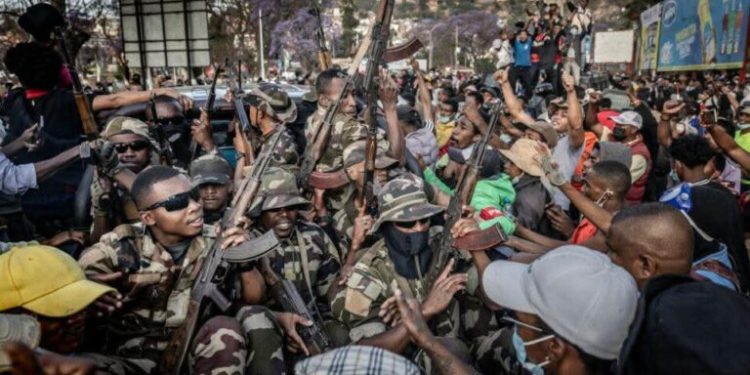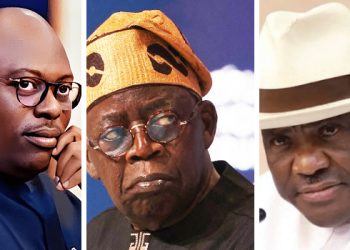*Defy orders to quell riots amid growing unrest
Tensions in Madagascar reached a new peak on Saturday as groups of soldiers defied government orders and joined thousands of demonstrators in the capital, Antananarivo, in one of the largest anti-government protests seen since unrest broke out last month.
According to AFP reporters on the ground, soldiers arrived near Lake Anosy, where protesters had gathered, just after police attempted to disperse the crowds with tear gas and stun grenades.
The soldiers were met with loud cheers, with demonstrators chanting “Thank you!” and waving the national flag alongside uniformed personnel.
Earlier in the day, soldiers at a military base in Soanierana district released a video publicly declaring their refusal to act against fellow citizens. In the video, they said: “Let us unite, military, gendarmes and police, and refuse to be paid to shoot our friends, brothers, and sisters.”
They urged military personnel across the country to reject any orders to use force and told soldiers stationed at the airport to block any aircraft from departing.
“Point your weapons at those who order you to fire. They won’t care for your families if you die.”
The extent of the military’s defection remains unclear, but their presence significantly boosted the morale of the demonstrators and marked a major shift in the balance of power.
The unrest began on September 25, driven by widespread frustration over persistent power outages and water shortages.
What began as economic protests have since evolved into a broader youth-led political movement demanding the resignation of President Andry Rajoelina.
Saturday’s mass demonstration, largely driven by youth, was the largest yet, indicating growing momentum against the government.
In 2009, it was a mutiny at the same Soanierana military base that played a pivotal role in bringing Rajoelina to power during a similar wave of popular discontent.
In a press conference on Saturday, the newly appointed Minister of Armed Forces, General Deramasinjaka Manantsoa Rakotoarivelo, urged restraint: “We call on our brothers who disagree with us to prioritise dialogue. The Malagasy army remains a mediator and the last line of defence for the nation.”
Despite these calls, the government has taken a harder line in recent days.
Following the initial wave of protests, President Rajoelina dissolved his cabinet, but has since pivoted by appointing military officers to key positions, including naming a soldier as Prime Minister on October 6.
He declared that Madagascar “no longer needs disturbances,” signaling a firm stance against further unrest.
In the lead-up to Saturday’s protests, security forces had used aggressive tactics, including rubber bullets and tear gas. Videos of violent police actions, such as a protester being chased and beaten unconscious, went viral, prompting widespread outrage.
The United Nations condemned the use of excessive force and urged authorities to respect fundamental rights, including freedom of assembly and peaceful protest.
Madagascar, one of the poorest nations globally, has a history of political instability since gaining independence in 1960.
Mass protests in 2009 ousted then-president Marc Ravalomanana, and brought Rajoelina to power for the first time.
He returned to office after winning controversial elections in 2018 and again in 2023, though the latter was marred by a widespread opposition boycott and allegations of electoral malpractice.









